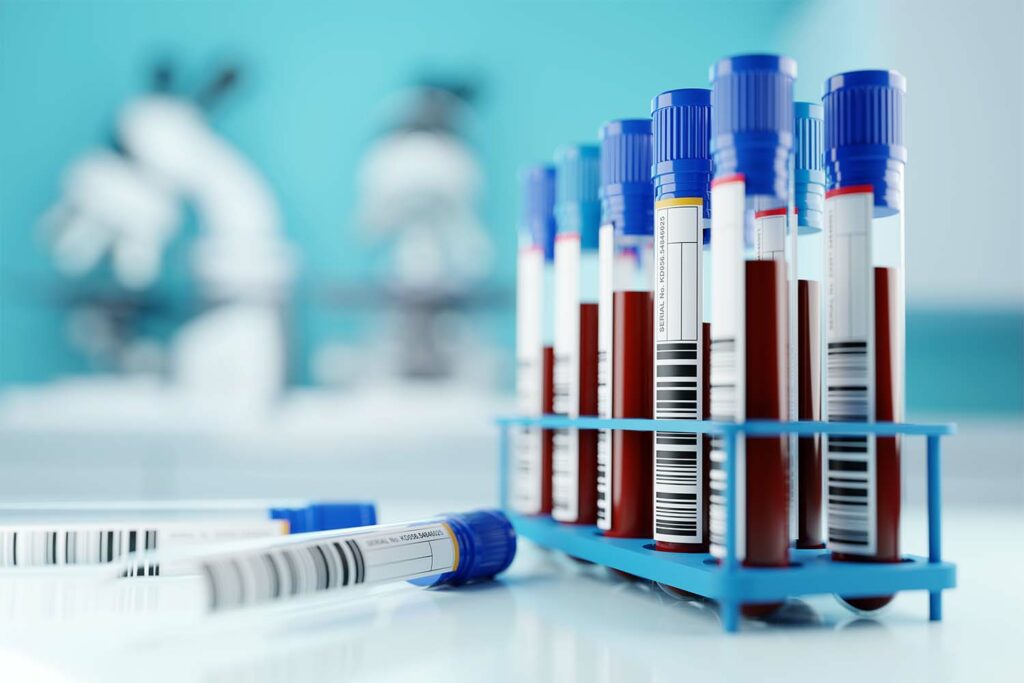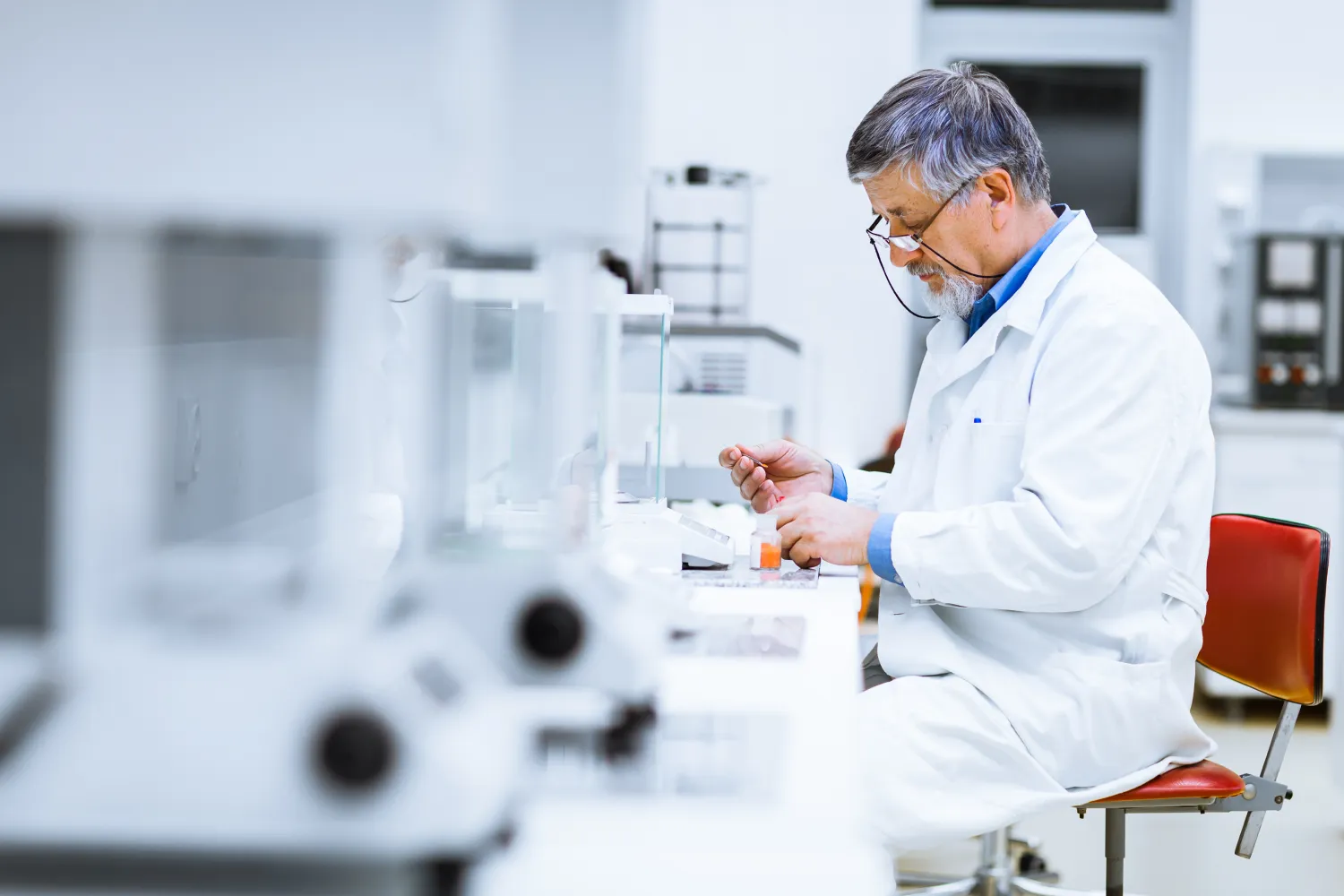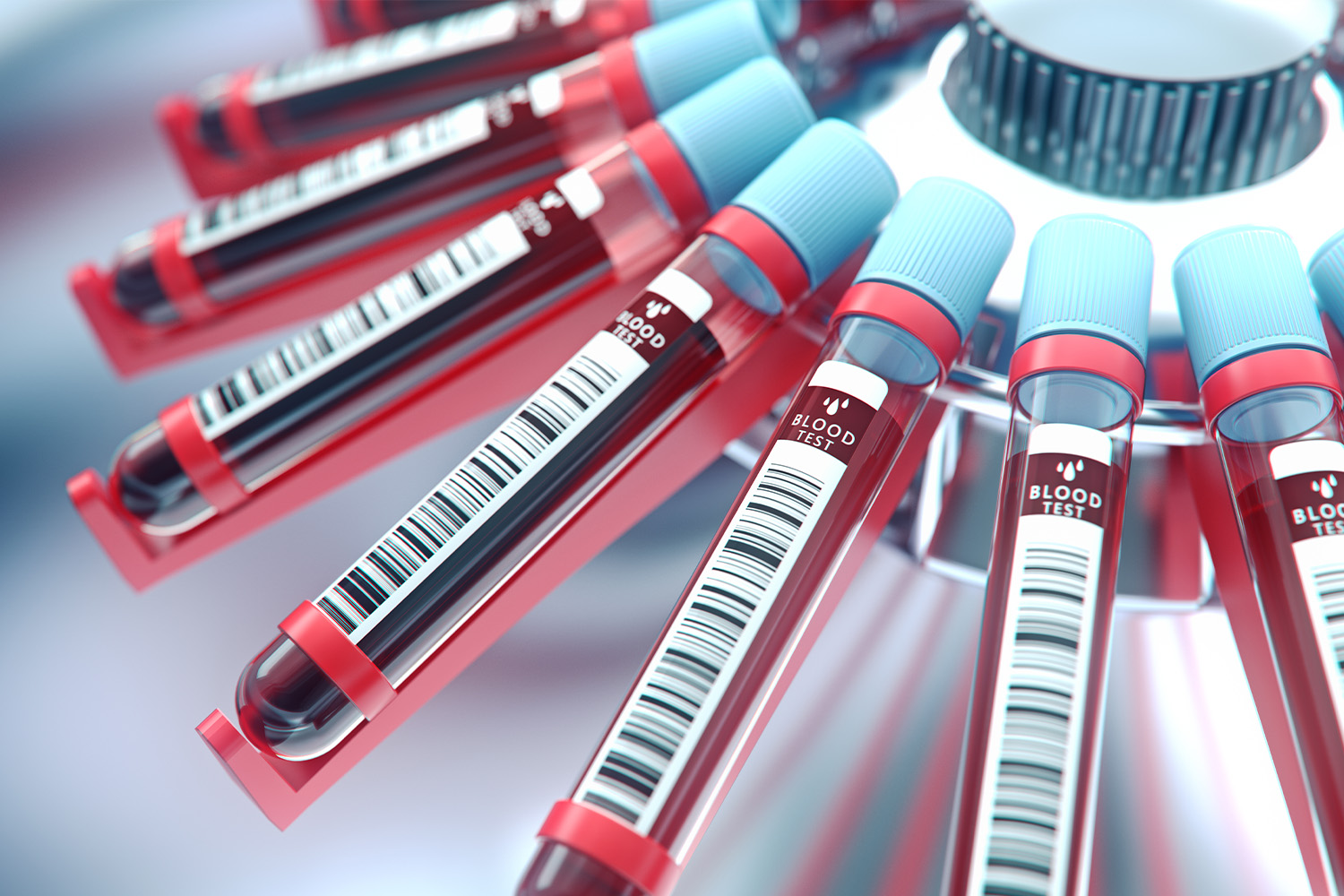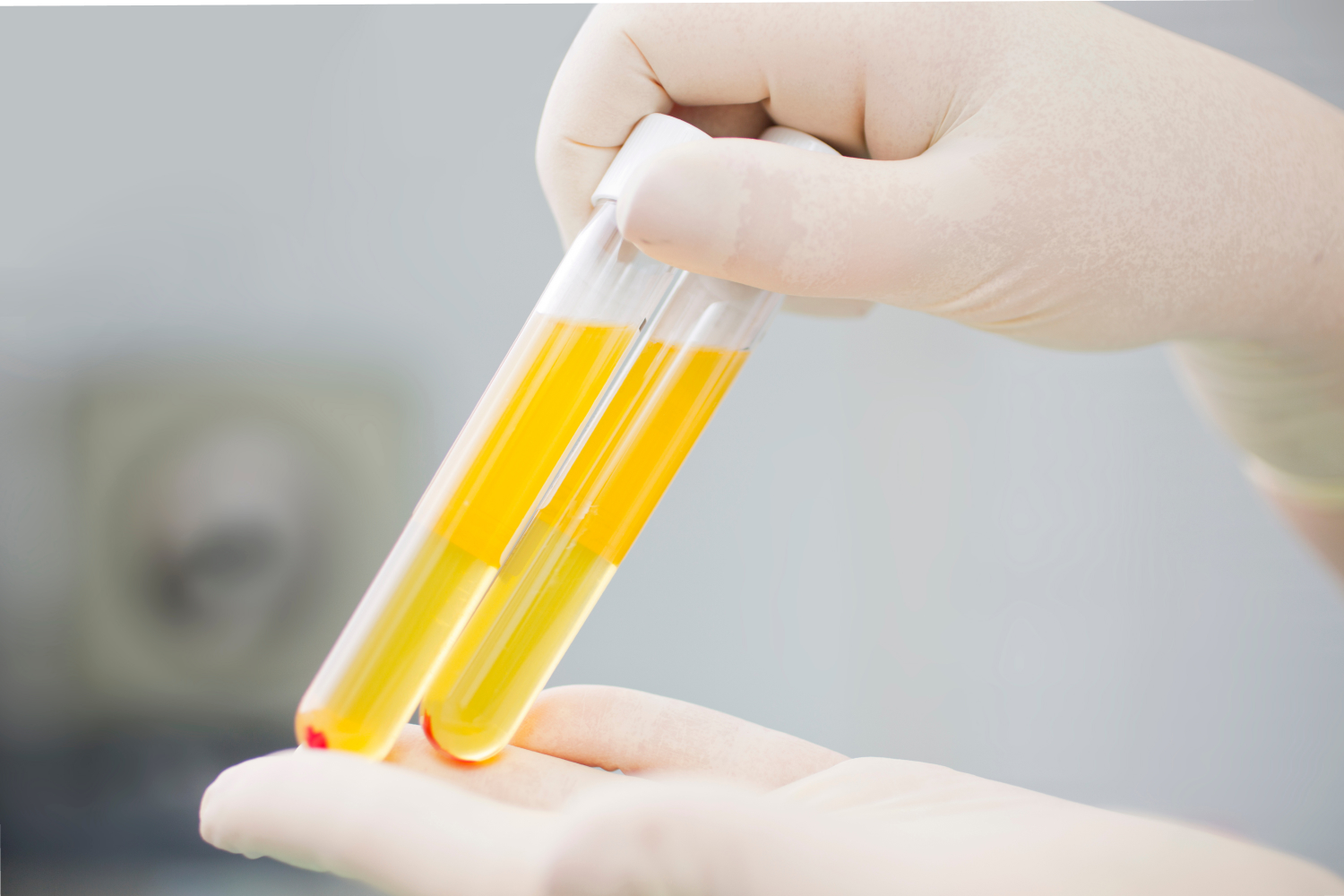
The average human adult has more than 5 liters (6 quarts) of blood in their body. Blood is essential for the necessary functions of life, as it transports oxygen and helps get rid of toxins or waste products. Blood also contains immune cells that help fight against infections and platelets to assist with blood clotting.
Although it is often needed for transfusions, blood is required for many laboratory and diagnostic testing procedures.
Blood can be collected to perform various clinical tests, such as:
- Complete blood count (CBC)
- Blood lipid profile
- Creatinine
- C-reactive protein (CRP)
- Genetic tests
- BNP testing
- Blood chemistry tests
- Hematocrit studies
Other tests may be conducted to diagnose specific conditions, monitor diseases, and assess how treatment may be working. Continue reading to learn more about blood samples, how they are collected, and the difference between plasma and serum.
Blood Specimens for Laboratory Testing
Laboratory tests are often conducted with the use of blood specimens. However, not all blood specimen samples are the same. Depending on the purpose or required clinical testing procedures, different blood specimens may be obtained.
The main samples that can be collected are whole blood, plasma, and serum. These samples are not interchangeable and must be collected correctly to provide a proper sample.
Blood samples are collected in vacuum tubes, or tubes that have been partially evacuated to create an internal air pressure that is lower than atmospheric pressure. These tubes are designed to draw the exact volume needed for the sample. Extra blood should never be forced into the tube when drawing blood.
Blood sample tubes may have different color lids to indicate their contents. For example, red-top tubes do not contain anticoagulants, preservatives, or separator material; green-top tubes contain heparin, and lavender-top tubes contain EDTA. Tubes should also be properly labeled with all necessary patient information after collecting the sample.
Whole Blood
Whole blood consists of the cellular components of the blood, including the red blood cells, white blood cells, and platelets. These cellular components are suspended in the liquid portion of the blood, known as the plasma. The plasma is the straw-colored fluid that makes up 60% of the blood, while the white blood cells, red blood cells, and platelets make up 40% of the blood.
Whole blood typically comes from a donor patient and is extracted into a plastic or glass tube containing an anticoagulant. Whole blood for testing in a clinical laboratory is usually collected from a superficial vein.
The collection of blood samples should be performed appropriately to avoid hemolysis, which can occur from shaking the sample. Hemolysis is characterized by the breakdown and rupture of red blood cells, which causes hemoglobin to travel into the plasma.
Lab results may be altered with samples in which hemolysis has occurred. Causes of hemolysis also include the improper collection of a blood sample from a patient, contaminant exposure, and temperature changes, among other causes.
Plasma vs. Serum
Plasma is the straw-colored liquid part of the blood that remains after centrifuging blood with an anticoagulant. It mainly consists of water. However, it also contains other essential components, such as proteins, sugars, and fat molecules. The proteins that are in the plasma include albumin, globulin, and fibrinogen. In addition, plasma contains enzymes, hormones, antibodies, and clotting factors.
Serum is the liquid part of the blood that is obtained from a blood sample tube that does not contain an anticoagulant. After the blood sample is allowed to clot and is centrifuged, the resulting fluid is serum. The main components of serum are albumin and globulin.
Both plasma and serum can be obtained after centrifugation. The primary difference between plasma and serum is that plasma contains fibrinogen and serum does not. Fibrinogen, also known as Factor I, is the major plasma protein coagulation factor.
Obtaining Plasma vs. Serum
Plasma may be obtained for an assay or other processes. The best practices for collecting plasma include determining the appropriate sample tube to obtain the sample.
Collect a whole blood sample in the tube with the correct anticoagulant and ensure the tube is completely filled. Then, invert the tube around eight to ten times, but do not shake the tubes. Sample tubes should then be centrifuged at 2500 to 3000 RPM for approximately 10 minutes.
After centrifuging the sample, place the plasma in a transfer tube. Most samples require that plasma be separated from cells within two hours of collection.
For serum, obtain the correct serum sample tube for collection. Some tubes, called Serum Separator Tubes (SSTs), contain a separator gel. This silicone gel has a density between that of serum and that of red blood cells. When centrifuged, the silicone gel in the tube acts as an impenetrable layer to separate the red blood cells at the bottom and the serum at the top.
To collect serum, a tube without anticoagulants should be used. After drawing the sample, the tube should be inverted five to six times to stimulate blood clotting. As with plasma collection, the tube should not be shaken in order to prevent hemolysis.
The sample should be allowed to clot for 30 minutes before centrifugation. Afterward, the sample should be centrifuged for 10 to 15 minutes at 2500 to 3000 RPM. After centrifugation, the serum should be transferred to a transfer tube within 45 to 60 minutes.
As with all biospecimen samples, the container or tube should be labeled appropriately.
Uses of Plasma vs. Serum
Plasma and serum can be used for several purposes. Many of these purposes overlap, and both plasma and serum should be used to verify or confirm test results.
Common uses of plasma and serum include:
- Diagnostic tests
- Antibody tests
- Culture medium supplementation
- Blood type tests
If only a plasma or serum sample is obtained, you will not be able to verify false results. Obtaining both plasma and serum samples can add more flexibility for different purposes.
Anticoagulants for Blood Samples
Clotting may be an essential process for collecting the right blood samples. The blood clotting process involves a cascade of serine proteases or clotting factors. The result of this process is the conversion of prothrombin to thrombin, which converts fibrinogen into fibrin for a blood clot. Platelets are the mediators that help regulate the blood clotting cascade.
The clotting factors involved with the cascade include Factors XII, XI, IX, and VIII. Anticoagulants need to be used to prevent clotting and obtain plasma samples. Anticoagulants work by disrupting the activity of these factors and preventing blood clotting. In addition to anticoagulants, preservatives may be added to plasma specimen tubes.
Specific anticoagulants for the laboratory test should be used and are not interchangeable. These anticoagulants may be chosen based on their features and how they work with the sample for the test.
Consult with the specimen requirements for the specific test you are conducting to find more information about how to collect the specimen.
EDTA, Citrate, and Heparin
Whole blood collection tubes should contain the appropriate anticoagulant to prevent blood clotting. There are three main anticoagulants used for blood specimen samples: Ethylenediaminetetraacetic acid (EDTA), citrate, and heparin. EDTA and citrate primarily work on calcium ions needed by coagulation factors.
EDTA is one of the most commonly used anticoagulants for diagnostic test labs. It works to inhibit clotting by chelating or removing the calcium needed for clotting. EDTA has been used since the early 1950s and holds some important advantages over other anticoagulants. For example, it does not distort blood cells, which makes it a good option for many hematological tests.
One caveat to using EDTA is that EDTA can inactivate certain enzymes that require a calcium ion for activity, such as alkaline phosphatase. It’s important to consider this interaction to avoid immunoassay interference.
Citrate is another commonly used anticoagulant that also chelates calcium ions. It is mainly used for coagulation tests since its effects can be reversed easily by adding calcium ions to the sample. EDTA and heparin can affect the results of coagulation tests, such as activated partial thromboplastin time (aPTT) and prothrombin time (PT) tests. Therefore, coagulation test results may be hard to decipher with EDTA and heparin as opposed to citrate.
Heparin is an anticoagulant that may be used for routine chemistry tests. It works by activating antithrombin to inhibit thrombin and coagulation. In combination with antithrombin III, heparin can also inactivate Factor Xa to inhibit coagulation. It may be used for cholesterol, CRP, and hormone tests.
However, heparin can interfere with PCR tests (instead, EDTA should be used for such tests). Heparin may affect measured Troponin I values, as Troponin I values in heparinized plasma are usually lower than those in EDTA plasma or serum.
So, which anticoagulant is best for clinical diagnostic tests? It depends. Make sure to understand all aspects of the clinical diagnostic tests you are looking to conduct in order to use the right samples.
Bottom Line
It’s crucial to understand what sample types are appropriate for different assays. If you are unsure, you should read the test manufacturer’s instructions. Consider the timelines for collecting and transferring blood specimens as time limits apply.
Clinical Tests With iProcess
iProcess delivers and provides biospecimens for pharmaceutical, diagnostic, and research organizations across the world. Ensure high-quality results with iProcess, a leading biospecimen supplier that ships from over 1,000 sites.
Contact iProcess for more information or to get a quote.
Sources:
Blood Groups and Red Cell Antigens | National Library of Medicine
Blood Collection Tube | ScienceDirect
Ethylenediaminetetraacetic Acid (EDTA) | Dependent Pseudothrombocytopenia: A Case Report | PubMed




